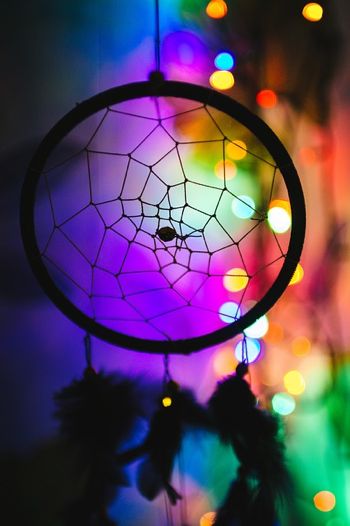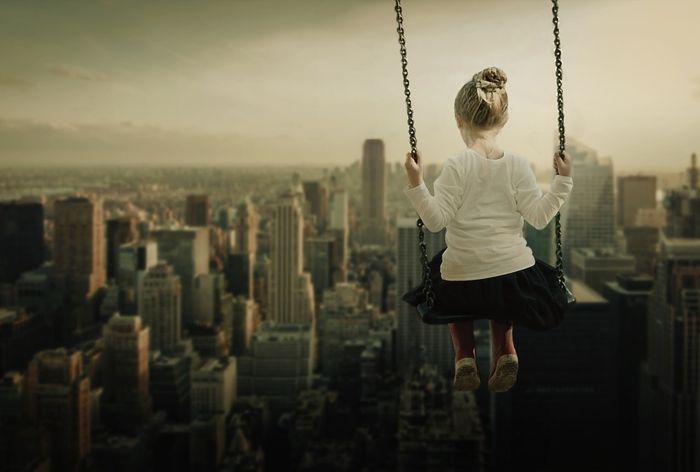Have you tried boosting creativity with hypnagogia?
I’ve always hated being awakened in the morning.
Alarms are the worst. I feel like throwing them across the room.
For a long time, I figured I was being overly sensitive, but now I know better. Those precious few moments between being sleep and becoming fully awake are when I get my best creative ideas.
I’m not the only one. Stephen King said the inspiration for Misery came to him while lightly asleep: “The inspiration for Misery was a short story by Evelyn Waugh called ‘The Man Who Loved Dickens,’” he writes on his website. “It came to me as I dozed off while on a New York-to-London Concorde flight.”
Other authors have received inspiration from their dreams, but I’m not talking about dreams. Rather, there is a very specific period of time between being asleep and waking up, or between being awake and falling asleep, that can be a creative writer’s goldmine.
This time even has an official name: It’s called hypnagogia.
What is Hypnagogia?
Hypnagogia is simply the state between wakefulness and sleep when you’re not really fully awake or fully asleep, but somewhere in between. It’s unique because it allows you to dip into the dream state while you’re still aware of your conscious thoughts.
The term hypnagogia comes from the Greek words for “sleep” (hypnos) and “to lead” or “guide” (agogo), referring to the idea of being led into the dream world. Though the term is most often used to describe the state that occurs before falling asleep, it can also refer to the period before waking up—officially termed “hypnopompia.”
Artist Salvador Dali called this unique state of mind “the slumber with a key,” referring to its ability to lead to creative insight. He used to induce the state via a method I’ll share later in this post, as did Edgar Allen Poe.
The famous writer said of hypnagogia:
“There is, however, a class of fancies, of exquisite delicacy, which are not thoughts, and to which, as yet, I have found it absolutely impossible to adapt language. I use the word fancies at random, and merely because I must use some word; but the idea commonly attached to the term is not even remotely applicable to the shadows of shadows in question. They seem to me rather psychal than intellectual. They arise in the soul (alas, how rarely!) only at its epochs of most intense tranquility — when the bodily and mental health are in perfection — and at those mere points of time where the confines of the waking world blend with those of the world of dreams. I am aware of these ‘fancies’ only when I am upon the very brink of sleep, with the consciousness that I am so.”
Famous Writers and Artists Often Used Hypnagogia
Mary Shelley, too, wrote that she saw her character Frankenstein while in the grips of a “waking dream,” which his another term for hypnagogia:
“I saw with shut eyes, but acute mental vision—I saw the pale student of unhallowed arts kneeling beside the thing he had put together. I saw the hideous phantasm of a man stretched out, and then, on the working of some powerful engine, show signs of life …”
Many more artists and thinkers have tried to induce hypnagogia often because it allows what is normally extremely difficult to accomplish: remembering dreams, or those ideas gained in the dream-like state.
 A Great Way for Writers to Escape the Editing Brain
A Great Way for Writers to Escape the Editing Brain
During hypnagogia, the mind is free to make creative associations and to assimilate verbal and imaginative information without the usual critical screening that is so ever-present in our waking state.
Writers call this the “editor’s brain,” and we welcome any method to help us escape its influence, particularly when involved in drafting a piece of writing.
Dreams are one way to do that, but they are inaccessible most of the time. Scientists say that everyone dreams, but because these experiences are buried deep in the unconscious mind and occur during a state when the conscious mind is checked out, we rarely remember them.
Those few that we do remember—often because we’re awakened in the middle of REM “deep” sleep—can offer a world of ideas.
Obviously, it’s not practical or even healthy to be waking yourself up from a deep sleep on any regular basis. Fortunately, you don’t have to. You can simply use the state of hypnagogia to accomplish close to the same thing.
Hypnagogia Creates a Waking Dream State
In a study on hypnagogia published in 1924, researcher David Slight acknowledged this fact:
“In the many discussions of the dream which have taken place comparatively little attention has been given to hypnagogic phenomena, although they would seem to throw much light on the problems of the dream. Whereas the dream occurs in the sleeping state and is isolated from the waking stream of thought, these phenomena, although of the same nature as the dream, are intimately linked up and often blended with the so-called conscious or waking thoughts of the moment, and are easily accessible for introspection.”
Indeed, whereas dreams are usually fully immersive—we are “in” the dream world without any thought that it might not be real until we wake up—hypnagogia allows us to traipse through that dream world while remaining aware that we’re doing so. We become more like observers than participants, or at least, we quickly transition from one to the other.
Scientists have discovered, in fact, that during this “trippy state” as it’s sometimes called, both alpha and theta waves are present in the brain. Alpha waves are those associated with a relaxed state of consciousness, while theta waves are those that occur during restorative sleep.
Usually, these brain waves occur at different times, but during hypnagogia, they occur together for a short period before one takes over. For that limited space, you get to enjoy the benefit of free-flowing ideas and dream-like associations while still aware of what’s going on, so you can remember and use what you experienced.
If you’re not yet taking advantage of this state to boost your creativity, you may want to start.
How Writers Can Experience Hypnagogia More Often
You may have experienced the magic of remembering a dream in the past. Perhaps you’ve even used one to inspire a piece of writing. Or maybe you’ve benefitted from the ideas that came to you during a period of hypnagogia.
If you’d like to tap into this creative well a little more purposefully, try the following tips.
1. Use Dali’s “Key to Slumber”
Dali taught an actual method for inducing a state of hypnagogia. It went something like this:
Sit in a comfortable chair, arms on the armrests, hands dangling over the edge while holding a heavy metal key (or other similar object) between the thumb and forefinger of one hand. Under the key, place an upside-down plate. Close your eyes and allow yourself to relax. As you get close to sleep, you’ll enter the state of hypnagogia, where creative insights come easily.
As sleep starts to take over, your hand will relax and the key will fall, clanging onto the upside-down plate. This will bring you back to full consciousness, allowing you to record your impressions immediately before forgetting them.
Make sure you keep a notebook and pen beside you for that purpose.
2. Write Morning Notes
Author Julia Cameron (The Artist’s Way) is famous for recommending “morning pages.” You can use a similar idea to take advantage of those few moments between sleep and wakefulness on mornings when you don’t have to use an alarm to wake up. Or, if you must get up at a certain time, try using a gentle waking alarm that uses gradually increasing intensities of light or sound to more slowly wake you up.
First, the night before, present your mind with a problem you’re having with your writing. Maybe you’re trying to figure out a sticky plot point or struggling with the ending. Put the problem in the form of a question (what’s the best way to end this story?) and concentrate on that question before you go to sleep.
The next morning, allow yourself to wake up gradually. As you do, remember your problem and see if any ideas occur to you. If they do, jot them down quickly in the notebook you keep by your bed, but try not to wake yourself up fully. Simply raise up enough to write the ideas down, then let your head rest on the pillow again.
As long as you stay relaxed and don’t allow the thoughts of your day to intrude, you may continue to receive ideas for 10-15 minutes before your waking brain manages to fully take over.
3. Take Naps
Albert Einstein was a famous napper, and he relied on them heavily to help him solve problems. That’s because a nap can consist mostly of hypnagogia, mainly because of its typical short duration.
Use a method similar to writing morning notes. Present yourself with a problem, then settle yourself somewhere comfortable where you can nap. Choose a comfortable chair rather than a bed, as the point is to relax but not fall all the way asleep.
Keep a notebook nearby, then allow yourself to close your eyes and rest. Once you’ve thought about the issue, let it go—don’t dwell on it too hard or you may not be able to relax. Trust that your brain will help you when it’s ready, and nap. If you’re afraid you may fall asleep, set a timer for 20 minutes and place it nearby.
When the alarm goes off, jot down any ideas that may have occurred to you, even if they don’t make sense at first. They may when you review them later. Realize that you may not get amazing solutions every time, but if you get into the habit, you can train your brain to produce more creative insights for you.
Do you use hypnagogia to help you write?
Sources
Carr, M. (2015, February 20). How to Dream Like Salvador Dali. Retrieved from https://www.psychologytoday.com/us/blog/dream-factory/201502/how-dream-salvador-dali
Poe, E. A. (1846, March). Works – Misc. – Marginalia [part V]. Retrieved from https://www.eapoe.org/works/misc/mar0346.htm
Radford, T. (2018, February 22). Frankenstein’s hour of creation identified by astronomers. Retrieved from https://www.theguardian.com/books/2011/sep/26/frankenstein-hour-creation-identified-astronomers
Slight, D. (1924). Hypnagogic phenomena. The Journal of Abnormal Psychology and Social Psychology, 19(3), 274-282. doi:10.1037/h0069199
Stephen King. (n.d.). StephenKing.com – Misery Inspiration. Retrieved from https://www.stephenking.com/library/novel/misery_inspiration.html
Tuck. (2017, August 15). Hypnagogia: What Is It, and Can It Help With Creativity? Retrieved from https://www.tuck.com/hypnagogia/


Yeah, I love writing notes about my WIP when I first wake up. It’s such a creative time of the day!
So true. My favorite time for ideas. :O)
I have some amazing visual dreams that usually wake me at odd hours of the morning. Sometimes I remember them, but usually I forget. I’ll put a notebook and pen nearby to record when I awake enough to record. I’m usually dreaming of myself at work and being lost. Not sure what that would convey. I’m willing to nap and see if there’s any creative dreams I can remember to help resolve difficulties in life or what path I need to take.
Dreams are always so fascinating aren’t they? But yes, usually hard to remember, whereas this technique should help keep the conscious brain more aware.
Fascinating article!
Thanks, Karen! :O)